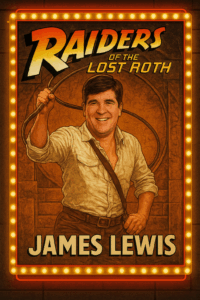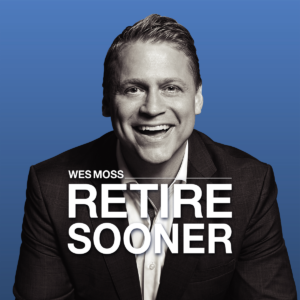Explore powerful, often-overlooked retirement tactics—like the Rule of 55 and the 62/70 Social Security strategy—and hear listener questions answered by Wes and Christa to help you build an effective, income-focused financial future. 🎯
-
Are corporate earnings the #1 financial metric for long-term investors to track when making better investment decisions?
-
Learn how to evaluate earnings per share (EPS) and earnings growth when investing in individual stocks or index funds.
-
Should retail investors join earnings calls—or is it better to focus on broader S&P 500 earnings trends?
-
Understand how proxy voting works and whether your shareholder vote might impact company decisions.
-
Get insight on the “62/70” Social Security strategy—why one spouse claiming early while the other waits may optimize retirement income and possibly protect surviving spouses.
-
Explore the Rule of 55, which lets you withdraw from your 401(k) without penalties starting at age 55, years earlier than the standard 59½ rule. Learn the critical conditions and employer plan requirements that determine Rule of 55 eligibility.
-
Discover how a “reverse rollover,” for those who choose it, could unlock penalty-free access to retirement savings by shifting IRA funds into a qualifying 401(k).
-
Understand the pros and cons of rules-based ETFs and factor investing versus traditional low-cost index funds.
-
Hear Wes’s take on expense ratios, investment screening methods, and how to align your portfolio with your beliefs, without overpaying on fees.
-
Dive into the mechanics of backdoor Roth IRAs and how those who choose to roll over traditional IRAs might be able to simplify the Roth conversion strategy.
-
Learn how to optimize Health Savings Accounts (HSAs) and Flexible Spending Accounts (FSAs) when changing jobs or insurance plans.
Start creating your path toward financial freedom and retirement happiness with these topics and more on this episode of the Retire Sooner Podcast!
🎧 Tune in now to hear stories, stats, and effective financial planning that could reshape your future. Subscribe, share it with a friend, and take one step closer to your happy retirement. Follow the show on Instagram and YouTube.
Call 800-805-6301 to leave a voicemail or contact us HERE for a chance to have your question featured in an upcoming episode.
Read The Full Transcript From This Episode
(click below to expand and read the full interview)
- Wes Moss [00:00:04]:
I’m Wes Moss. The prevailing thought in America is that you’ll never have enough money and it’s almost impossible to retire early. Actually, I think the opposite is true. For more than 20 years, I’ve been researching, studying, and advising American families, including those who started late, on how to retire sooner and happier. Now I’m bringing in my good friend Christa DiBiasee, who has worked closely with Clark Howard for many years now to answer your questions and explore what makes a happy and fulfilling retirement. My mission on the Retire Sooner podcast is to help a million people retire earlier while enjoying the adventure along the way. I’d love for you to be one of them. Let’s get started.Christa DiBiase [00:00:51]:
Today you’re going to talk about, first of all, corporate earnings. How much?Wes Moss [00:00:54]:
Love that topic. Yeah, let’s do that.Christa DiBiase [00:00:56]:
How important are corporate earnings? Should we, you know, should we. Should they ruin our day? Make our day or month, our year, whatever.Wes Moss [00:01:03]:
Should we pay attention?Christa DiBiase [00:01:04]:
Should we pay attention?Wes Moss [00:01:05]:
You should pay attention. Yeah.Christa DiBiase [00:01:06]:
And then the rule of 55, you’ve mentioned it before, but you’re gonna get into that today.Wes Moss [00:01:11]:
Yeah, it’s a, it’s a super important rule that doesn’t get a lot of press. It kind of flies under the radar. And I was thinking about it, and there’s a couple of reasons why I under. I think it does. But we’ll bring it to light here. I think our audience, we have a very smart audience, and I think they, our audience probably knows about it or at least has heard about it. So we’ll dive into that one a little bit, too. But let’s start with corporate earnings.Wes Moss [00:01:34]:
The question is, should retail investors, not mutual fund managers, hedge fund managers, should you as a retail investor care about corporate earnings? Should you understand, should, you know, should you follow corporate earnings? There is a group of. I, there were 300 people at a bar in New York City recently from. For not a football game, not a baseball game, not a basketball game, but a corporate earnings party for Nvidia. And you start seeing that around. That’s the first time I’ve ever seen a financial news network cover an earnings party at a bar. And maybe that’s part of the reason why this topic keeps coming up. And the short answer is, yes, of course, we should all care about earnings. And here’s why.Wes Moss [00:02:23]:
Earnings are. If you were to go and try to look at all, you look at all the different metrics of the marketplace and. Or companies, you can look at revenue, you can look at net income, you can look at margins, you can look at gross margins, net margins, you can look at wage growth. I mean, it’s almost an endless list. If you’re looking at metrics for companies to figure out, hey, how is this company doing financially? And should I own it? Should I buy it, should I sell it, Should I continue to own it? But really it comes down to. And it’s for individual companies and for the market as a whole, earnings are almost. They’re not the only thing that matters, but they are the paramount metric that any company looks at, whether you’re a private company and then particularly a public company. So the short answer is, yes, of course, we all need to worry about earnings and care about earnings.Wes Moss [00:03:15]:
The other question is, if I own individual stocks, should I be on these earnings calls? Should I look at every single earnings report? Or if you’re an index fund investor, I think those are two categories that are somewhat different. If you’re an index fund investor, you should care about earnings. But if you’re owning the s and P500 or the Russell 2000 and you own hundreds or thousands of stocks, then in any in particular earnings call really doesn’t have that big of an impact. But the overall market and I really like looking at the overall earnings of the s and P500. And this is very interesting. If you track just a line, that is earnings. So if you go back to the year 2000, the aggregate earnings of the S&P 500, by the way, earnings is expressed as a total number and then per share. So if a company earns $100 at the end of the year and there’s 10 shares, that it’s $10 per share.Wes Moss [00:04:11]:
Or if the company is $100 and there’s 100 shares, it’s a dollar a share. What really matters is that what’s coming next, is the company going to earn a dollar and five cents or is the company going to earn a dollar and eight cents? So it’s earnings and then earnings growth, and that’s what the market cares about aggregately. Go back to 2020 or the year 2000. The total s and P combined per share, this is a number we can also track, was about $55 total.Christa DiBiase [00:04:40]:
Can I ask a quick question? I’m sorry. It’s very basic, I’m sure, But when you’re talking about earnings per share, is that net. It’s net earnings. You’re always talking about net. Right. Of expenses.Wes Moss [00:04:50]:
You are.Christa DiBiase [00:04:51]:
Okay.Wes Moss [00:04:51]:
You’re looking at. Well, it actually can be expressed in a couple different ways.Christa DiBiase [00:04:56]:
Okay.Wes Moss [00:04:57]:
But usually you’re getting to the bottom line, what are earnings or just the net profits of a company? Now, there’s another metric that would be net income. But the earnings number is what essentially the company is bringing in revenue, paying their, their main costs, and those are earnings. Now, they can be adjusted and you can say, well, we’re, we’re going to go build another factory and we’ve got, we’re going to spend some money for that. But what is the business doing? What is just the overall what’s left at the end of the day before I go out and make 10 other purchases with some of those earnings?Christa DiBiase [00:05:32]:
Got it, sorry.Wes Moss [00:05:33]:
A number of financial strength. And if you look at how this has gone for the s and P500 over the last, call it 25 years, in the year 2010, it was $83 in aggregate. In the year 2015, it was $106. In the year 2020 was $94. And for 2025, estimates are around 220 bucks, depending on where you’re looking. So if you look at a chart of aggregate earnings for the s and P500 over time and you plot the actual level of the index, you’ll see that they don’t follow perfectly, but they look very similar over time. Yes, there’s some times when markets dip and earnings stay steady or earnings will dip and markets are above them, but pretty much those lines eventually converge. So if there’s anything to look at for the growth of the, let’s call it the US Equity markets, it really comes down to earnings and the growth of earnings.Wes Moss [00:06:31]:
So if I’m an index fund investor, I care about that a lot. Ultimately, that’s what it comes down to. Earnings and earnings growth. If we lived in a country where this went from $220 in aggregate down to $100, down to 75 down to 50, we would have a real problem, and it would. We would not be in an environment where stocks go up over time. The only reason stocks go up over time is because earnings have gone up over time. And we expect in this country and as investors for that to continue. Now, it’s not every company, of course, some companies will dip in any given year.Wes Moss [00:07:07]:
Some companies go out of business, but the vast majority of companies do a really good job of just slowly ratcheting the business better and better and better. And that’s usually expressed in an earnings number. Now, if I’m an individual stock investor, they take on, I would say, a heightened level of importance. So we do want to understand, even if you’re a retail investor, Relative to a hedge fund manager or a mutual fund manager. The companies that you own over time. And it doesn’t have to be perfect symmetry every quarter. And most companies are not like that. But over time we want to see earnings growth.Wes Moss [00:07:44]:
You do not want a company that has declining earnings over time. That is usually, not always, but usually a real problem. So do earnings matter to retail investors? Absolutely. Profits matter. That is the absolute core of market markets over time. Do you need to obsess over every single quarter? Usually not if you’re a buy and hold investor. But you do want to understand that earnings over time are going in the right direction.Christa DiBiase [00:08:07]:
Okay, we’ll go to some questions now. Clint in New York says I hold seven different stocks in a Fidelity non retirement account and receive secure emails requesting my proxy vote prior to the annual company meeting. I always vote as the board recommends. This seems to be the easy way out. Is this a good probably practice? There are also detailed and lengthy materials to review. I never do. Who has the time to read through all these documents? Even if I do go over all the materials, I would be even more confused on how to vote. I once heard there needs to be a minimum number of shareholders casting votes or the resolutions cannot pass.Christa DiBiase [00:08:41]:
Is this true?Wes Moss [00:08:42]:
It’s funny, you may get 2 or 3 proxy. So proxy vote is really just like a ballot for a shareholder. Because you own a slice of the piece of, you get a vote. Just like being a citizen here in the United States, you get to vote. And proxy is just the term for the piece of paper or electronically. Obviously we can do it now on how we can vote on board nominations, on mergers, acquisitions, anything major that the board has to undertake, they’re going to vote for it. But guess what? All the shareholders get to vote too. And if you have seven different stocks, you’re going to get maybe seven, maybe 14, maybe 21 different proxies a year.Wes Moss [00:09:21]:
Imagine if you own 100 stocks, you’re going to get hundreds of proxies every single year. So the short answer is they do matter. But it is proportional. So if I’m a mutual fund and I own 50 million shares of a company, well, guess who has a bigger say than me as an individual investor owning 100 shares of a company. So a fund is going to have a whole lot of say so when it comes to that vote because they proportionally own a lot more and they have, they have that many more votes. So can you outmatch five mutual funds that own hundreds of billions of shares of company? The answer is not really it doesn’t really move the meter. However, boards do want to hear the voice of the collective ownership group, because everyone that owns stock is an owner in that company. So imagine if 1,000 or 10,000 individual owners, even if it’s only a couple hundred shares, they want to know what the ownership group is thinking.Wes Moss [00:10:20]:
So I think that if you own 100 shares, does your voice really move the vote? Technically it does. But what is more important, I think is to give yourself a voice of what you think the company should be doing. And I think companies do listen. Now, the board’s usually going to get their way because they’re lobbying big owners of this big owners of the COVID of the stock usually. So I think you should vote, but it’s not the end of the world if you don’t. You don’t need to have to make a vote on every single proxy. But if you care and you have an opinion about it, by all means. Clint.Christa DiBiase [00:10:58]:
All right. And Doug in Pennsylvania says, what do you think of the 6270 Social Security strategy where the higher earning spouse waits to 70 and the lower earning spouse claims at 62? In my specific situation, I earn about a third more than my wife. We both plan to retire and stop working later this year. Me at 67, her at 62. We have enough assets to fund our life if we decide to both wait to 70. But that monthly Social Security deposit would be nice.Wes Moss [00:11:27]:
Would be nice. It is. It’s. And it’s money today, Doug. I do like the 6270. So what Doug is asking here is we all know that we can wait and maximize our Social Security till if we wait till age 70. So it’s. In some circles it’s blasphemy to start early.Wes Moss [00:11:43]:
62. Why would you ever take it so early? You have such a reduced amount. It’s a third less than it would be if you wait just to your fra or your full retirement age. But remember that Social Security, when you decide to claim you and or your spouse, it’s about optimization for your financial situation, not maximization. So this one, to me, thinking of it this way, where the lower earning spouse takes it today or soon at 62, and then you wait, you’re higher, you’re almost splitting the difference. So you’re waiting in one respect and you’re taking cash flow today in another. And that to me can be an optimization strategy for your plan. The reason I also really like this for couples, particularly the higher earning spouse, is that and if Doug, you’re the man in this situation and actuarially your wife will live longer.Wes Moss [00:12:40]:
So there’s an argument to be made that if you get to 70 and you have that much higher payment, and I’ve seen people wait to 70 and their Social Security payments are 4004, 4100, 4200. Over $4,000 a month.Christa DiBiase [00:12:55]:
Wow.Wes Moss [00:12:55]:
And even if your spouse has a low Social Security payment, if you pass away, she will then assume what your payment was. So let’s say that you’ve collected Social Security for many years because of inflation. It’s all the way up to $5,000 a month. Hers isn’t even close to that because she started early. Something happens to you, it’s a little bit of an insurance policy for income for her and she will assume she doesn’t get to keep her payment plus yours, but she will assume your higher payment if you pass away. So there’s a little bit of income insurance to me and. Because nobody knows exactly when the clock’s going to expire.Christa DiBiase [00:13:32]:
Right.Wes Moss [00:13:34]:
I think one of our questions, one of our questions, I don’t know, a couple weeks ago said I want to try to figure out when to take Social Security. But there’s one caveat. I don’t know when I’m going to die.Christa DiBiase [00:13:43]:
Right.Wes Moss [00:13:44]:
Just one caveat. Of course we don’t know when we’re going to die. And that’s a good thing. So I like that this is a splitting strategy. You’re kind of splitting the difference between taking a low payment and waiting and taking a much higher payment. It’s an optimization strategy, Doug, and it sounds like in your situation it can make a lot of sense.Christa DiBiase [00:14:03]:
Sounds great. All right, now when we come back, we’re going to talk about the rule of 55.Wes Moss [00:14:10]:
Hi, it’s Wes Moss. May’s mayhem is behind us and June is in full bloom. Spring brings milestones like graduations, weddings, and even new homes. It’s also a time when you might be thinking about retirement. If that’s you, visit our team at Capital Investment Advisors. We’ll work with you to craft an income focused portfolio designed to deliver a reliable paycheck in retirement. Get started@yourwealth.com that’s y o u r wealth.com. this is the topic that I think it’s overlooked and I think our audience is super smart.Wes Moss [00:14:47]:
And I, and part of the reason I wanted to cover this is we, we’ve gotten a couple questions about the Rule 55. I think some, one of our listeners said, hey, can you cover this a little bit more in depth. So I took that as a cue to do that. So first of all, let’s start this way. Getting to retirement sooner is just better, and that’s my opinion. But it’s also based on real life seeing people being able to retire a year or two sooner or three, and what that does to their life. It also goes back to some of my more recent research. And I don’t know if I even, I didn’t ask this question, but I’m always looking at kind of state of happiness and where people, how they’re feeling in their life.Wes Moss [00:15:25]:
And I usually measure it in five different buckets. And what was one thing that came back? Because you’re able to tell in this research who’s not retired and who is retired. And retirement’s defined as a state where you no longer have to work if you don’t want to. What was interesting is that there was a statistically significant and large jump for the population that was going from not retired to retired, meaning that retirement in itself increases the propensity for us to be living better lives. And I guess I’ve known that mostly, but to see it with a large national survey and statistically significant, I think it just puts more wind in my sails of just say, look, this is a goal we want to get to and it helps with our overall sense of well being and our happiness. So that’s why to me, I was just an advocate for this. If we can get to retirement a little bit sooner, it’s just better. And this is a rule that does that.Wes Moss [00:16:24]:
The Rule of 55 allows you to access your money at 55 without penalty versus the normal rule that I think most people know, which is age 59 and a half. Now, I think everybody understands and most people know that rule, the 59 and a half rule from an IRA. I can start tapping my retirement money on a 59 and a half without penalty. And I think the reason is that it’s just a black and white rule for the most part. And it’s also a penalty. It’s associated with. Well, I had, I get a 10% penalty if I do it before that. And Amer, we don’t like penalties, we don’t like tickets.Wes Moss [00:17:04]:
Who likes a speeding ticket? Who likes a fine? And that’s kind of what happens if you’re 58 and you want to tap money from your Iraq and you pull out a big chunk of money unless you’re using another very nuanced rule, which is the Rule 72T, which we’re not going to cover today, you’re going to get dinged by 10%. If that same money were in a 401k, then there’s a very good possibility that you’re able to access it at 55 plus, which is almost five years sooner. Five years suited to retirement. Sounds really good to me. And the reason it’s a little more under the radar in the IRS code, and I think in being spoken about, is because there are a couple more layers to the rule of 55. So the good news here is if you qualify for it, you can start tapping your retirement money at 55 without the 10% penalty. Great. But one, your plan has to allow for it.Wes Moss [00:18:01]:
Now, even though it’s in the IRS code that this is allowed, not every single retirement plan, 401k, 403b, et cetera, adheres to this. There are some statistics. I’ve looked this up. I think the Vanguard or someone did a study that said 85% of plans allow for this. So even though it’s in the IRS code, not every plan allows for it, but the vast majority of plans do. So that’s the good news. So that was. That’s one wrinkle.Wes Moss [00:18:26]:
The other wrinkle is that you have to have left your job at age 55 or later, and you have to leave behind that 401k at that previous job. And that’s the only one that qualifies. It’s not. You turn 55 and all 401ks you’ve ever had in your past history automatically qualify. It’s only the one for the job where you made it to the age of 55 and then left at 55 or older. So there’s another little wrinkle. Okay, so this is why. There’s some layers to this.Wes Moss [00:18:57]:
A little. This is some financial tiramisu here. And this is why it’s a little less well known. The other caveat is that I get this question. Well, I just left my job. Do I qualify? Well, I was laid off from my job. Do I qualify? It doesn’t matter. It’s.Wes Moss [00:19:13]:
If you leave that job for any reason you choose it, the company pushes you out. As long as you’re age 55 in the calendar year, you leave and it’s that same 401k, then that is very much could be eligible for this early withdrawal age 55, not 59 and a half without the 10% penalty. There’s a couple of stories around this. Let’s call him Jim in Rome, left his job at age 55, had $250,000 in a 401k. But he had a lot of money in other IRAs. Well, there’s also something that we can look at called a reverse rollover. Now one thing you can’t do to access his role is, is leave your job and then all of a sudden roll money into a 401k so you can access it. So it’s got to be there.Wes Moss [00:19:59]:
The money from a reverse rollover, which would be taking IRA money and rolling it into a 401k.Christa DiBiase [00:20:07]:
I don’t know. You could even do that, honestly.Wes Moss [00:20:09]:
Absolutely. You can consolidate if it again, if it makes sense for your situation and you’re doing the analysis and the comparison of the funds and the fees over here. The funds and the fees over here. If it makes sense for you, and this is one of these situations where it might make some sense, you can then almost as a, as a safety measure to get extra cushion is the way I look at it. Jim in Rome could, let’s say at 56, he’s still working. He’s worried about his job going away and he may get laid off and he might need to access that money. He needs $40,000 a year and there’s only 200 in the 401k. Well, he could before, while the sky is blue, things are still good.Wes Moss [00:20:49]:
He could always take, he could choose to roll some of his IRA money into his 401k. And then if he gets laid off or he chooses to leave, he’s, let’s call it 56, 57. That money’s in a 401k and that very likely could be eligible for withdrawals without the 10% penalty. If he’s got to pull $40,000 out a year doing that from an IRA, it’s a 10% penalty. So that could save him 4,000 bucks a year and early access to a big pool of money if you plan it right.Christa DiBiase [00:21:21]:
All right. Well, that is very, very cool. I have some questions.Wes Moss [00:21:26]:
It is cool. It is kind of a cool role.Christa DiBiase [00:21:28]:
If you could swing it right.Wes Moss [00:21:30]:
If you could swing it.Christa DiBiase [00:21:31]:
All right, we have questions here. This one’s from Scott in New York. I’m looking to get Wes’s thoughts on rules based funds and ETFs like Dimensional or Advantis. And are there, are these funds and ETFs still considered passively managed? Expense ratios are typically three times the amount of Vanguard. What do you think Jack Bogle would think of these funds since their costs are considerably more than traditional index funds and ETFs? I think of Bogle’s costs matter hypothesis versus the efficient markets hypothesis. Do lower costs always win?Wes Moss [00:22:04]:
I can just tell you, John, Jack Vogel would have a conniption fit, may rest in peace if he were asked this question.Christa DiBiase [00:22:13]:
So would Clark Howard.Wes Moss [00:22:14]:
And so would Clark Howard what? Three times the fee? Three times. Yes, costs matter and you really can’t argue with that. They do matter. They do matter, but. So I think here’s what Scott’s saying is that you can own a passive S&P 500 fund or total market index fund and the costs have gotten to be mutual funds used to be 1%, not index funds, but and now index funds have gotten below 0.1 of a percent. A lot of these are 0.02, so they’re borderline free. There’s almost no cost in some of these. So why would you pay 20 basis points? So versus 0.2.2 is actually 10 times more.Wes Moss [00:23:07]:
It’s not three times, Scott, it’s 10 times more. Why would you do that? Why are there so many of these and why are there hundreds of billions of dollars in these? Well, there’s a couple of reasons. One, when you’re in a totally passive index, it is just that there are no rules. The only rule for most market cap weighted ETFs is that they just follow whatever’s in the index as closely as they can. And that’s why there’s really not a lot of management to do. It’s just whatever’s in the index is going to be in the fund or the etf. So there’s virtually not. It can never be zero cost in it, but there’s very little cost.Wes Moss [00:23:43]:
But you are then totally exposed to whatever that index is. And there’s always, there’s some concern, particularly in the last couple of years, that there’s some drawbacks to that too. There’s concentration risk. We know that the top 10 companies in the S&P 500, 10 out of 500 make up 30% of the total index because of their size or cap based on the amount, the size of these companies. So if you’re an investor that wants to do something, anything different than that, you’re gonna have to find an ETF that has some rules around it. And I would call a lot of these ETFs semi passive or factor ETFs because they have factors that they say here are the three factors that we’re going to screen for for a stock to make it into our ETF. So again, doesn’t take a research team of 500 people flying all over the world visiting companies. But it does take a team to make sure that there’s screening for companies that could be again, pretty much any variable.Wes Moss [00:24:44]:
We want to look at earnings growth, roe, EPS growth, EPS stability, beta momentum. There’s so many different metrics, but fundamental value dividend growth is one. Companies can’t be in our ETF unless they’ve grown the dividend for five years or 10 years or 20 years. So I do like these semi passive rules based or factor oriented ETFs because they give us some more options beyond just the index. I think just the index is great for a lot of people for a big percentage of their money, but it’s not perfect for everyone all the time or for their for a hundred percent. So I would try to find the factory ETFs that are based on variables that you believe in that give you some comfort and make sure those costs are as low as humanly possible. But they’re going to be a little bit more than a plain passive ETF or index fund or cap weighted index fund. And so I think they are.Wes Moss [00:25:50]:
I wouldn’t fully discount them. Maybe Clark does, maybe Jack Bogle does. But I use some of these factor rules based ETFs and it gives me great comfort knowing that I’m investing the way I would like to invest for a portion of my assets.Christa DiBiase [00:26:03]:
Okay. Danielle in Virginia says, I started a new job recently and have two questions. I currently have an IRA with about $200,000. That’s from a previous employer. Four okay rollovers and a little bit of direct contributions I made in previous years. My new company uses fidelity for their 401k. Can I roll my existing IRA into the new 401k? I’m very close to the Roth income limits and would like to do a backdoor Roth once I’m over the limit if possible. Additionally, I had an HSA at my previous employer through April.Christa DiBiase [00:26:37]:
My new company doesn’t have a high deductible option. Can I go back and max out my HSA on my own? I’m also planning to max out the fsa. I’ll be able to use it up this year with medical, vision and dental and covered the over the counter purchases.Wes Moss [00:26:52]:
Well, this one’s easy for Daniel. It was really just about the IRA, the 400. I’m sorry, this is. Danielle, it’s, it’s, this is easy because all we’re talking about here is the IRA, the 401k, the HSA, the FSA, and, and the proration of the SSA of the FSA in relation to her 401k and a backdoor Roth rollover. That’s all it is. That was very simple. It was supposed to be not really that simple. So, Danielle, there’s a lot, there’s a lot to this one.Wes Moss [00:27:21]:
So let’s start. I think the, the easier, with the bigger bite of the apple here would be that if you’re looking to do those backdoor Roth conversions, it would make it a lot simpler to not have a regular Iraq. Because when you have a regular IRA standing out there and you’re doing one of these back to Roth conversions, then you run into this proration rule of what’s already in the IRA versus what you’re contributing. So it could make it a lot less messy to take the ira if that’s your primary goal, is to just have all four 1k money. And this goes back to. We were talking about this on reverse rollovers. You can, you have the option usually to take retirement money from an individual retirement account and roll it into a company retirement plan, 401k, 403b. So I think that would make the Roth conversion potential a lot neater.Wes Moss [00:28:10]:
And that’s an easy move to do if you like your 401k plan. So that’s 1, 2. From what I could hear on the H essay, the health savings account, which you need to be in a high deductible plan. We have one of these where I work. We have a high deductible plan and we were able to contribute to an hsa. But because you were only in one or covered by a high deductible plan for it sounded like till April. So that means that she’s only got about four months of coverage. It may mean that you can only contribute a prorated amount.Wes Moss [00:28:43]:
So four months out of 12 is a third of the total, which is about 4300. So it may be that you can only contribute 1200 bucks, whatever the math is on that. 4300 times 0.33. Yeah. $1,400 approximately. Now, I don’t know, what if you go then back in a new employer to another high deductible savings plan? I would think that would allow you to increase those contributions as well. But that starts to get a little mess here.Christa DiBiase [00:29:14]:
But they don’t have a plan anyway, as a new employer.Wes Moss [00:29:17]:
Oh, they don’t have a plan.Christa DiBiase [00:29:18]:
Right.Wes Moss [00:29:18]:
Okay. So. Right. So the HSA would then only be that pro. Likely be that prorated amount, from what I could tell. And then the fsa, the flexible spending account, that is one of those user to lose it. So if you put money in, if you have a thousand dollars in an FSA and at the end of the year it’s not used, you do lose it. And I’m, I, I don’t, I actually have never used an FSA just because of that worry and that issue of losing out on the spending.Wes Moss [00:29:44]:
So I would focus your attention and energy on the HSA versus the fsa.Christa DiBiase [00:29:50]:
And if she’s already maxed out the HSA and she’s saying she will use all the money in the, in the FSA this year, and I would say if you think you, you really think you can, you know you’re going to have these expenses and if she has to prorate the HSA and she’s already contributed her max with the old employer, maybe go ahead and just do the FSA this year if you know you’ll be able to use it all, don’t you think?Wes Moss [00:30:10]:
Well, yeah, if you know you’re going to use it. Yeah, absolutely. Yeah. Particularly she’s limited Danielle on the HSA contributions.Christa DiBiase [00:30:17]:
Yeah. Okay, great.Wes Moss [00:30:18]:
One, two, punch for healthcare.Christa DiBiase [00:30:20]:
Yep.Wes Moss [00:30:20]:
Christa, thank you for joining us today. I’m looking forward to more of our listener questions. So if you have any questions you’d like us to answer in future episodes, I’d love to hear from you. You can send them into us through yourwealth.com contact.Riley Moynes [00:30:38]:
Hey y’ all, this is Mallory with the Retire Sooner team. Please be sure to rate and subscribe to this podcast and share it with a friend. If you have any questions, you can find us at WestMoss. That’s W-E-S-M-O-S-S dot com. You can also follow us on Instagram and YouTube. You’ll find us under the handle Retire Sooner podcast. And now for our show’s disclosure. This is provided as a resource for informational purposes and is not to be viewed as investment advice or recommendations.Riley Moynes [00:31:05]:
This information is being presented without consideration of the investment objectives, risk tolerance or financial circumstances of any specific investor and might not be suitable for all investors. The mention of any company is provided to you for informational purposes and as an example example only and is not to be considered investment advice or recommendation or an endorsement of any particular company. Past performance is not indicative of future results. Investing involves risk, including possible loss of principal. There is no guarantee offered that investment return, yield or performance will be achieved. The information provided is strictly an opinion and for informational purposes only and it is not known whether the strategies will be successful. There are many aspects and criteria that must be examined and considered before investing. This information is not intended to and should not form a primary basis for any investment decisions that you may make.Riley Moynes [00:31:52]:
Always consult your own legal, tax or investment advisor before making any investment tax, estate or financial planning considerations or decisions. Investment decisions should not be made solely based on information contained herein.
Call in with your financial questions for our team to answer: 800-805-6301
Join other happy retirees on our Retire Sooner Facebook Group: https://www.facebook.com/groups/retiresoonerpodcast
This information is provided to you as a resource for educational purposes and as an example only and is not to be considered investment advice or recommendation or an endorsement of any particular security. Investing involves risk, including the possible loss of principal. There is no guarantee offered that investment return, yield, or performance will be achieved. There will be periods of performance fluctuations, including periods of negative returns and periods where dividends will not be paid. Past performance is not indicative of future results when considering any investment vehicle. The mention of any specific security should not be inferred as having been successful or responsible for any investor achieving their investment goals. Additionally, the mention of any specific security is not to infer investment success of the security or of any portfolio. A reader may request a list of all recommendations made by Capital Investment Advisors within the immediately preceding period of one year upon written request to Capital Investment Advisors. It is not known whether any investor holding the mentioned securities have achieved their investment goals or experienced appreciation of their portfolio. This information is being presented without consideration of the investment objectives, risk tolerance, or financial circumstances of any specific investor and might not be suitable for all investors. This information is not intended to, and should not, form a primary basis for any investment decision that you may make. Always consult your own legal, tax, or investment advisor before making any investment/tax/estate/financial planning considerations or decisions.













